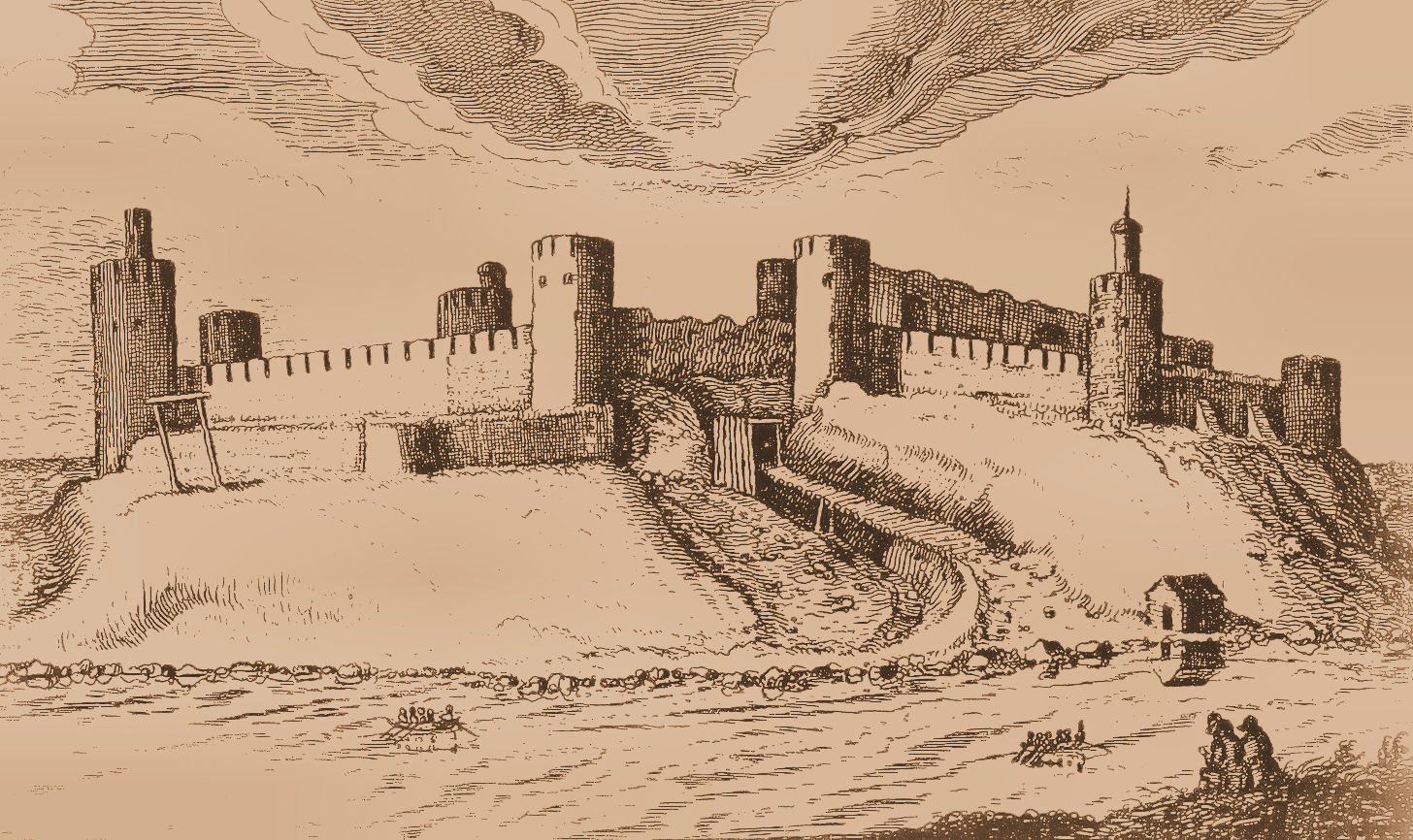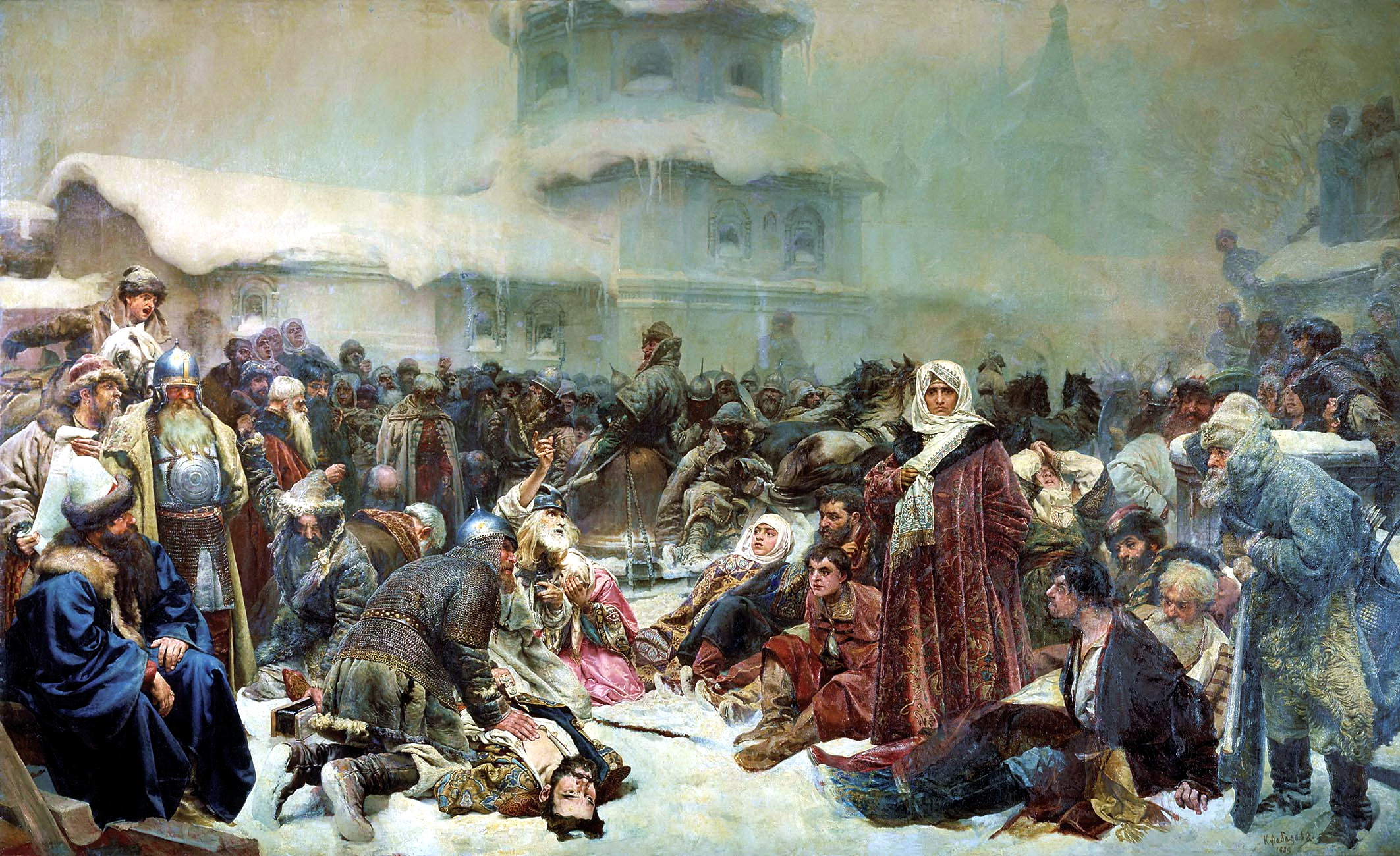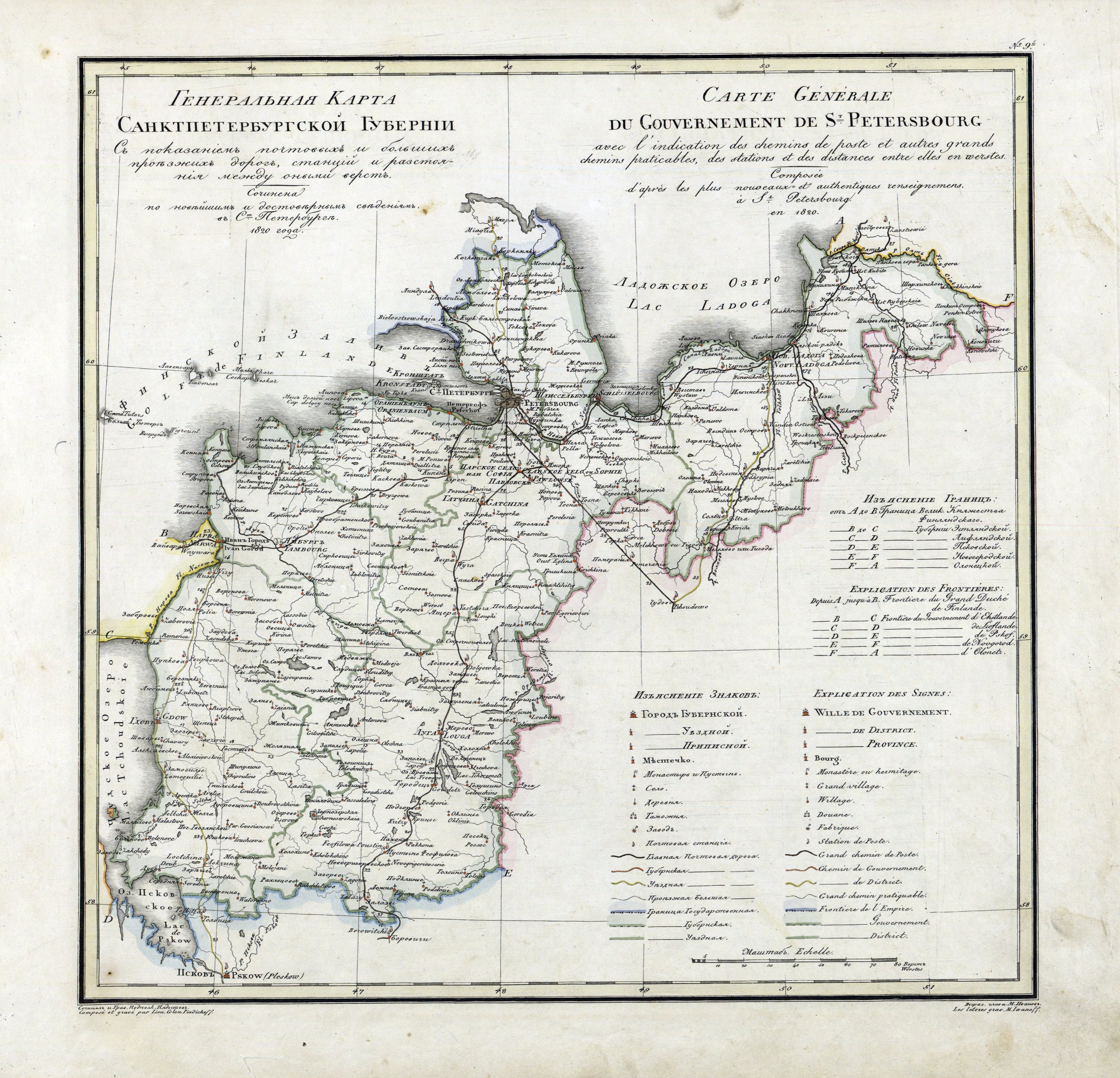|
Ivangorod
Ivangorod ( rus, Иванго́род, p=ɪvɐnˈɡorət; et, Jaanilinn; vot, Jaanilidna) is a town in Kingiseppsky District of Leningrad Oblast, Russia, located on the east bank of the Narva river which flows along the Estonia–Russia international border, west of St. Petersburg. The town's population was recorded as Ivangorod is a major border crossing point and a railway station by the Tallinn– St. Petersburg line. It is located just opposite to the Estonian town of Narva. The town is the site of the Ivangorod Fortress, a prominent fortification monument of the 15th and the 16th centuries. History The fortress, established in 1492 during the reign of Ivan III of Moscow, took its name (literally: Ivan-town — ''gorod'' in Russian means "town" or "city") from that of the Tsar. Between 1581 and 1590 and from 1612 to 1704, Sweden controlled the area. Ivangorod was granted town privileges and administered as a Russian township under the Swedish Empire ... [...More Info...] [...Related Items...] OR: [Wikipedia] [Google] [Baidu] |
Ivangorod Fortress
Ivangorod Fortress (russian: Ивангородская крепость, et, Jaanilinna linnus, vot, Jaanilidna) is a 15th century castle in Ivangorod, Leningrad Oblast, Russia. It is located on the east bank of the Narva river which currently forms the international border between Russia and Estonia, across from the Estonian city of Narva. Ivangorod Fortress was established during the reign of Ivan III in 1492, intended to reaffirm Muscovy's access to the Baltic Sea and to form a bulwark against the Teutonic Order, being built opposite the powerful Teutonic Hermann Castle. The fortress eventually grew into the town of Ivangorod, and the structures of the fort were gradually expanded and strengthened. Ivangorod Fortress was controlled by Sweden after the end of the Livonian War in 1583, changing hands numerous times during conflicts and border shifts over the following centuries. Following World War I, the fortress was used as a POW repatriation camp from 1920-21. After Wor ... [...More Info...] [...Related Items...] OR: [Wikipedia] [Google] [Baidu] |
Narva
Narva, russian: Нарва is a municipality and city in Estonia. It is located in Ida-Viru County, Ida-Viru county, at the Extreme points of Estonia, eastern extreme point of Estonia, on the west bank of the Narva (river), Narva river which forms the Estonia–Russia border, Estonia–Russia international border. With 54,409 inhabitants (as of 2020) Narva is Estonia's third largest city after capital Tallinn and Tartu. In 1944, Narva was nearly completely destroyed during the battles of World War II. During the period of Soviet occupation of Estonia, Soviet occupation (1944–1991), the city’s original native inhabitants were not permitted to return after the war, and immigrant workers from Russia and other parts of the Soviet Union, former USSR were brought in to populate the city. The city whose population had been, as of 1934 census, 65% ethnic Estonian, became overwhelmingly non-Estonian in the second half of the 20th century. According to more recent data, 46.7% of th ... [...More Info...] [...Related Items...] OR: [Wikipedia] [Google] [Baidu] |
Kingiseppsky District
Kingiseppsky District (russian: Кингисе́ппский райо́н, fi, Kingiseppin piiri) is an administrativeOblast Law #32-oz and municipalLaw #81-oz district (raion), one of the seventeen in Leningrad Oblast, Russia. It is located in the southwest of the oblast and borders with Ida-Viru County of Estonia in the west, Lomonosovsky District in the northeast, Volosovsky District in the east, and with Slantsevsky District in the south. In the north and northwest it is washed by the waters of the Gulf of Finland. The area of the district is .Official website of Kingiseppsky District Its is the |
Narva River
The river Narva ( et, Narva jõgi; russian: Нарва), formerly also Narova flows north into the Baltic Sea and is the largest Estonian river by discharge. A similar length of land far to the south, together with it and a much longer intermediate lake, altogether forms the Estonia-Russia border. The long lake, mentioned, which the river drains is Lake Peipus. The lake notably drains the much longer Russian river, the Velikaya, and a large, splayed drainage basin in the two countries. The river gives its name to the Narva culture and the city of Narva, which faces the Russian town Ivangorod. At the coast it passes part of the resort of Narva-Jõesuu. Its mouth is specifically into the very open WNW-facing Narva Bay of the Gulf of Finland. It gives the second-greatest discharge into the Gulf of Finland. The greatest discharge is the Neva, ranking fourth as to European rivers. Etymology The etymology of the toponym ''Narva'' is not clear, but according to the most common ... [...More Info...] [...Related Items...] OR: [Wikipedia] [Google] [Baidu] |
Estonia–Russia Border
The Estonia–Russia border is the international border between the Republic of Estonia ( EU and NATO member) and the Russian Federation ( CIS member). The border is long. It emerged during World War I, in 1918, as Estonia declared its independence from the then warring Russian and German Empires. The border goes mostly along the national, administrative and ethnic boundaries that have gradually formed since the 13th century. The exact location of the border was a subject of Estonian–Russian dispute that was resolved with the signing of the Border Agreement, but neither Russia nor Estonia have completed its ratification yet. It is an external border of the European Union. History Origins of the border Until the 13th century no strict borders existed between the Slavic and Finnic peoples that populated north-eastern Eurasia. Their mutual relationships relied on the military and dynastic alliances, tributes and religious proselytism, occasionally interrupted by m ... [...More Info...] [...Related Items...] OR: [Wikipedia] [Google] [Baidu] |
Leningrad Oblast
Leningrad Oblast ( rus, Ленинградская область, Leningradskaya oblast’, lʲɪnʲɪnˈgratskəjə ˈobləsʲtʲ, , ) is a federal subjects of Russia, federal subject of Russia (an oblast). It was established on 1 August 1927, although it was not until 1946 that the oblast's borders had been mostly settled in their present position. The oblast was named after the city of Saint Petersburg, Leningrad. In 1991, the city restored its original name, Saint Petersburg, but the oblast retains the name of Leningrad. The capital and largest city is Gatchina. The oblast overlaps the historic region of Ingria and is bordered by Finland (Kymenlaakso and South Karelia) in the northwest and Estonia (Ida-Viru County) in the west, as well as five federal subjects of Russia: the Republic of Karelia in the northeast, Vologda Oblast in the east, Novgorod Oblast in the south, Pskov Oblast in the southwest, and the federal city of Saint Petersburg in the west. The first governor of L ... [...More Info...] [...Related Items...] OR: [Wikipedia] [Google] [Baidu] |
Ivan III Of Russia
Ivan III Vasilyevich (russian: Иван III Васильевич; 22 January 1440 – 27 October 1505), also known as Ivan the Great, was a Grand Prince of Moscow and Grand Prince of all Rus'. Ivan served as the co-ruler and regent for his blind father Vasily II from the mid-1450s before he officially ascended the throne in 1462. He multiplied the territory of his state through war and through the seizure of lands from his dynastic relatives, ended the dominance of the Tatars over Russia, renovated the Moscow Kremlin, introduced a new legal codex and laid the foundations of the Russian state. His 1480 victory over the Great Horde is cited as the restoration of Russian independence, 240 years after the fall of Kiev in the Mongol invasion of Kievan Rus'. Ivan was the first Russian ruler to style himself "tsar", albeit not as an official title. Through marriage to Sofia Paleologue, he made the double-headed eagle Russia's coat of arms and adopted the idea of Moscow as Third Ro ... [...More Info...] [...Related Items...] OR: [Wikipedia] [Google] [Baidu] |
Estonia
Estonia, formally the Republic of Estonia, is a country by the Baltic Sea in Northern Europe. It is bordered to the north by the Gulf of Finland across from Finland, to the west by the sea across from Sweden, to the south by Latvia, and to the east by Lake Peipus and Russia. The territory of Estonia consists of the mainland, the larger islands of Saaremaa and Hiiumaa, and over 2,200 other islands and islets on the eastern coast of the Baltic Sea, covering a total area of . The capital city Tallinn and Tartu are the two largest urban areas of the country. The Estonian language is the autochthonous and the official language of Estonia; it is the first language of the majority of its population, as well as the world's second most spoken Finnic language. The land of what is now modern Estonia has been inhabited by '' Homo sapiens'' since at least 9,000 BC. The medieval indigenous population of Estonia was one of the last " pagan" civilisations in Europe to adopt Ch ... [...More Info...] [...Related Items...] OR: [Wikipedia] [Google] [Baidu] |
Saint Petersburg Governorate
Saint Petersburg Governorate (russian: Санкт-Петербу́ргская губе́рния, ''Sankt-Peterburgskaya guberniya''), or Government of Saint Petersburg, was an administrative division (a '' guberniya'') of the Tsardom of Russia, the Russian Empire, and the Russian SFSR, which existed during 1917–1927. Establishment Ingermanland Governorate (, ''Ingermanlandskaya guberniya'') was created from the territories reconquered from the Swedish Empire in the Great Northern War. In 1704 prince Alexander Menshikov was appointed as its first governor, and in 1706 it was first Russian region designated as a ''Governorate''. According to the Tsar Peter the Great's edict as on , 1708,Указ об учреждении губерний и � ... [...More Info...] [...Related Items...] OR: [Wikipedia] [Google] [Baidu] |
Great Northern War
The Great Northern War (1700–1721) was a conflict in which a coalition led by the Tsardom of Russia successfully contested the supremacy of the Swedish Empire in Northern, Central and Eastern Europe. The initial leaders of the anti-Swedish alliance were Peter I of Russia, Frederick IV of Denmark–Norway and Augustus II the Strong of Saxony– Poland–Lithuania. Frederick IV and Augustus II were defeated by Sweden, under Charles XII, and forced out of the alliance in 1700 and 1706 respectively, but rejoined it in 1709 after the defeat of Charles XII at the Battle of Poltava. George I of Great Britain and the Electorate of Hanover joined the coalition in 1714 for Hanover and in 1717 for Britain, and Frederick William I of Brandenburg-Prussia joined it in 1715. Charles XII led the Swedish army. Swedish allies included Holstein-Gottorp, several Polish magnates under Stanislaus I Leszczyński (1704–1710) and Cossacks under the Ukrainian Hetman Ivan Mazepa (1708–17 ... [...More Info...] [...Related Items...] OR: [Wikipedia] [Google] [Baidu] |
Narvsky Uyezd
Narvsky (masculine), Narvskaya (feminine), or Narvskoye (neuter) may refer to: * Narvsky Municipal Okrug, a municipal okrug in Kirovsky District of the federal city of St. Petersburg, Russia * Narvskaya, a station of the St. Petersburg Metro, St. Petersburg, Russia {{Disambiguation ... [...More Info...] [...Related Items...] OR: [Wikipedia] [Google] [Baidu] |
Autonomous Governorate Of Estonia
In developmental psychology and moral, political, and bioethical philosophy, autonomy, from , ''autonomos'', from αὐτο- ''auto-'' "self" and νόμος ''nomos'', "law", hence when combined understood to mean "one who gives oneself one's own law" is the capacity to make an informed, uncoerced decision. Autonomous organizations or institutions are independent or self-governing. Autonomy can also be defined from a human resources perspective, where it denotes a (relatively high) level of discretion granted to an employee in his or her work. In such cases, autonomy is known to generally increase job satisfaction. Self-actualized individuals are thought to operate autonomously of external expectations. In a medical context, respect for a patient's personal autonomy is considered one of many fundamental ethical principles in medicine. Sociology In the sociology of knowledge, a controversy over the boundaries of autonomy inhibited analysis of any concept beyond relative autonomy ... [...More Info...] [...Related Items...] OR: [Wikipedia] [Google] [Baidu] |







